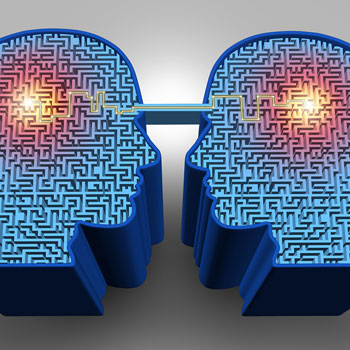By Nicklas Balboa & Richard D. Glaser, PhD
Published in: Psychology Today
WE-IQ TV Neuroscientist Interviews, Ep. 1: Joy Hirsch, PhD
In mid-2018, prior to Judith E. Glaser's passing on November 18, after a three-year battle with metastatic pancreatic cancer, CreatingWE produced a three-part WE-IQ TV insightful and thought-provoking series on the Neuroscience of Conversations. Below is part 1 of 3.
In this first episode of WE-IQ TV, Hirsch and Glaser dive deeper into learning about what goes on in the brain when two people engage in conversation.
- Conversations make our brains unique: When we dynamically engage with others, the neural activity in our brains is different in comparison to our "SOLO" mode.
- In conversations, brains mirror each other: When two people are interacting and sharing information, the signals from both brains are correlated and oscillate in synchrony, particularly in language receptive regions.
- Eye-to-eye contact is a fundamental social cue: Mutual eye contact between two individuals activates the right temporal-occipital-parietal junction, a region sensitive to high level social cues.
Joy Hirsch, PhD, is the Elizabeth Mears and House Jameson Professor of Psychiatry, Comparative Medicine, and Neuroscience Director, Brain Function Laboratory at the Yale School of Medicine, and is a member of The CreatingWE Institute's Scientific Advisory Board
References
1. Glaser, J. E., & Hirsch, J. (2018, May 1). Joy Hirsch WE-IQ TV Interview. Retrieved from https://vimeo.com/274248236/1dd3f4b62b
2. Hirsch, J., Adam Noah, J., Zhang, X., Dravida, S., & Ono, Y. (2018, September 11). A cross-brain neural mechanism for human-to-human verbal communication. Retrieved from https://www.ncbi.nlm.nih.gov/pmc/articles/PMC6137318/









